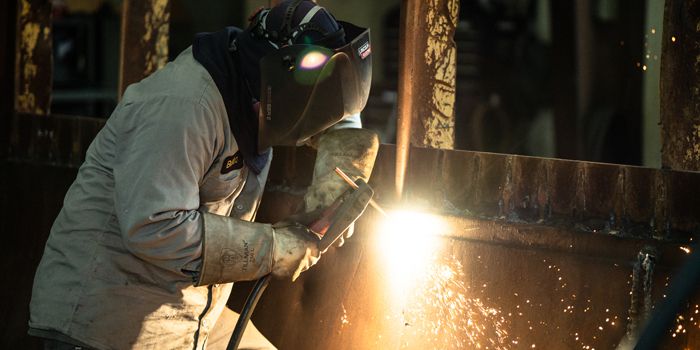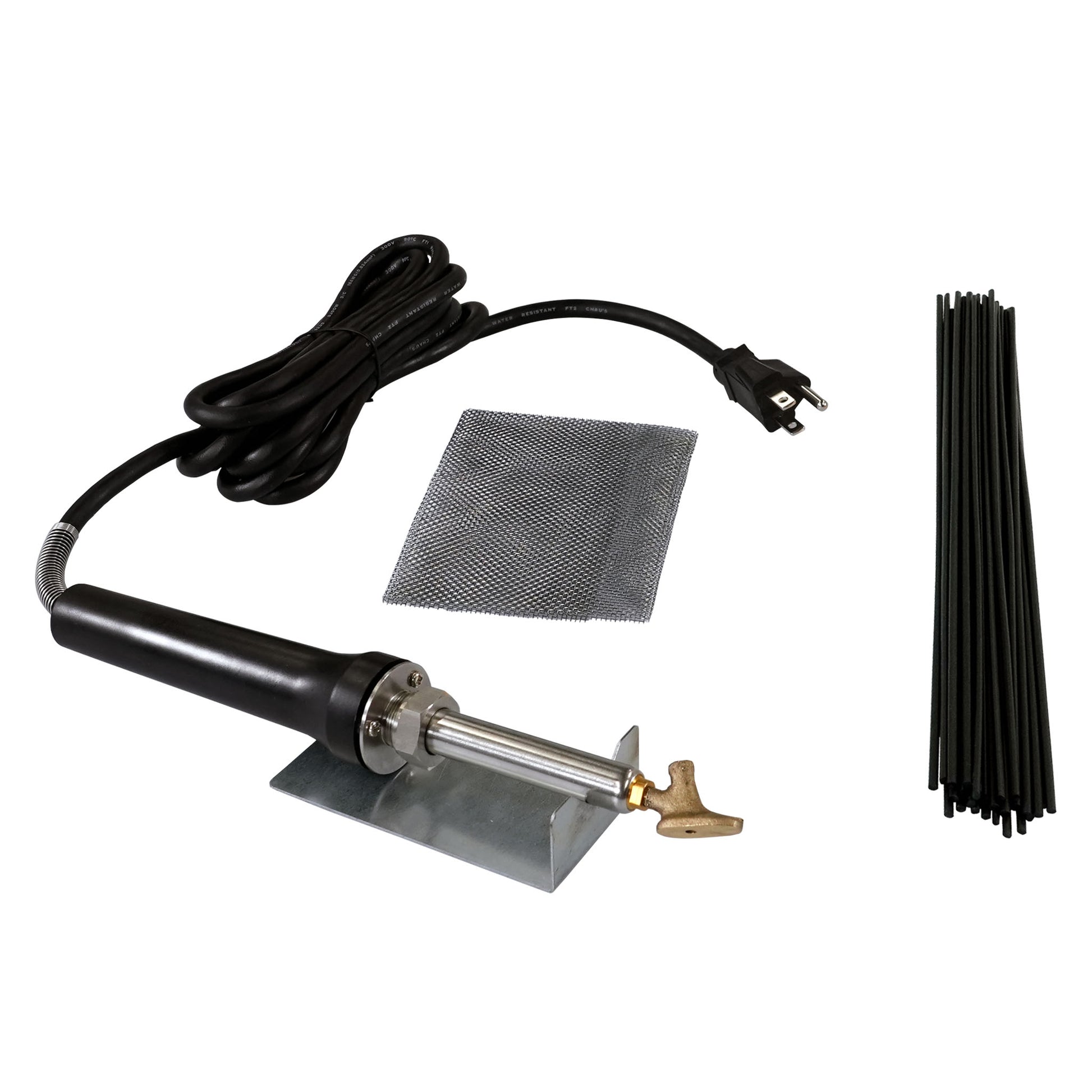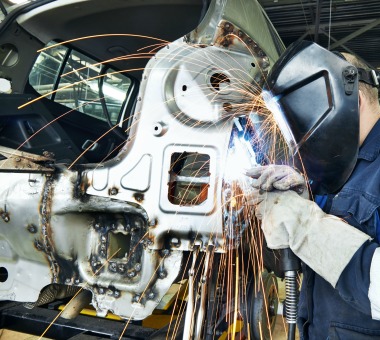The impact of overheating affects welds and Montana Mobile Welding and Repair Welding’s approach to fix it
Usual Welding Repair Service Issues and Just How to Address Them Successfully
Welding repairs frequently experience a range of concerns that can endanger the honesty of the end product. Typical issues consist of inadequate infiltration, porosity, and imbalance, amongst others. Each issue presents unique difficulties that call for details methods for resolution. Understanding these problems is important for welders aiming to enhance their skills and end results. This conversation will explore these typical welding repair work problems and effective methods to address them.
Insufficient Penetration
Poor penetration occurs when the weld steel stops working to fully fuse with the base product, leading to weak joints and prospective structural failings. This problem typically comes from inadequate warm input, inaccurate electrode angle, or improper welding speed. Welders may encounter poor penetration because of a miscalculation of the needed criteria for a certain material thickness or kind. Additionally, contamination on the base material's surface area can hinder efficient bonding, aggravating the problem. To address poor penetration, welders need to ensure suitable setups on their equipment and keep a clean work surface. Routine evaluation of welds is suggested to determine any type of deficiencies early, allowing for timely corrections and the avoidance of jeopardized structural integrity in bonded assemblies.
Porosity
Porosity is a typical flaw in welded joints that manifests as tiny gas bubbles caught within the weld steel. This issue can endanger the integrity of the weld, resulting in lowered strength and prospective failing under tension. Montana Mobile Welding and Repair. Porosity normally arises from contamination, dampness, or incorrect welding techniques, which enable gases to escape right into the molten weld pool. To address porosity, welders must assure correct surface area prep work, preserve a tidy workplace, and make use of ideal welding specifications. Additionally, selecting the appropriate filler material and protecting gas can reduce gas entrapment. Routine inspection and testing of welds can assist determine porosity early, ensuring timely corrective activities are taken, therefore preserving the top quality and dependability of the welded framework
Misalignment
Imbalance in welding can develop from different elements, including inappropriate setup and thermal expansion. Recognizing the source is vital for efficient resolution. Several adjustment strategies are offered to realign parts and assure architectural integrity.
Root causes of Misalignment
Welding imbalance often stems from a selection of underlying concerns that can jeopardize structural stability. One key reason is inappropriate fit-up of elements prior to welding, which can bring about voids and irregular surface areas. Variants in thermal growth during the welding process can also cause distortion, specifically if the products being joined have different coefficients of development. Additionally, insufficient fixturing and clamping may fail to hold parts firmly in position, leading to activity during welding. Improperly conserved equipment, consisting of welding devices and devices, may present variances in the weld bead, further adding to misalignment. Driver mistake, stemming from not enough training or experience, can likewise play a significant function in producing misaligned welds.

Adjustment Techniques Offered
Resolving misalignment successfully needs a mix of corrective methods customized to the details concerns available. One typical method is using jigs or components to hold elements in the right setting throughout welding, ensuring consistent placement. Additionally, pre-heating the materials can assist minimize distortion and improve fit-up. For significant misalignment, mechanical adjustment strategies, such as using hydraulic jacks or clamps, can be employed to deal with the position prior to welding. Post-weld heat treatment might additionally be required to relieve anxieties triggered by imbalance. Lastly, mindful assessment and modification throughout the configuration phase can stop misalignment problems from coming to be substantial issues, promoting a smoother welding process and enhancing general architectural integrity.
Distortion
Distortion is an usual difficulty in welding that can occur from various elements, including unequal home heating and cooling. Understanding the root causes of distortion is essential for implementing reliable avoidance strategies. Resolving this problem not only improves architectural stability but likewise boosts the general top quality of the weld.
Reasons for Distortion
When subjected to the extreme warmth of welding, materials commonly undergo adjustments that can lead to distortion. This phenomenon mainly develops from thermal growth and contraction during the welding process. As the weld area warms up, the product broadens; upon air conditioning, it acquires, which can produce internal tensions. Furthermore, uneven home heating throughout a work surface can worsen these anxieties, causing warping or bending. The kind of material also plays a significant duty; pop over to these guys steels with differing thermal conductivity and coefficients of development may respond differently, resulting in uncertain distortions. Bad joint design and inadequate fixturing can contribute to imbalance throughout welding, enhancing the chance of distortion. Understanding these reasons is essential for efficient welding fixing and avoidance strategies.
Prevention Techniques
Reliable prevention techniques for distortion during welding emphasis on controlling warmth input and making certain correct joint layout. Preserving a regular warm input helps to minimize thermal expansion and contraction, which can lead to distortion. Using strategies such as pre-heating the work surface can also reduce the temperature level gradient, promoting uniform home heating. In addition, picking ideal joint designs, such as T-joints or lap joints, can boost security and lower stress concentrations. Executing appropriate fixturing to safeguard the workpieces in position even more help in preserving placement during the welding process. Staggered welding series can disperse warmth extra equally, stopping localized distortion. By applying these strategies, welders can considerably reduce the probability of distortion and boost the overall high quality of their welds.
Breaking
Splitting is a common issue experienced in welding repair work, frequently arising from numerous factors such as improper air conditioning rates, product selection, or poor joint preparation. The occurrence of fractures can considerably endanger the stability of the weld, causing possible failings during procedure. To resolve this issue, welders have to initially assess the origin, ensuring that materials are suitable and appropriately selected for the certain application. Additionally, controlling the cooling price throughout the welding procedure is crucial; quick air conditioning can induce tension and result in cracking. Appropriate joint design and preparation additionally add to lessening the threat. Applying these methods can boost weld top quality and longevity, eventually lowering the chance of fracturing in ended up weldments.

Incomplete Fusion
A substantial concern in welding repair services is insufficient fusion, which takes place when the weld steel does not properly bond with the base product or previous weld passes - Belgrade Welding. This problem can bring about weaknesses in the joint, potentially jeopardizing the stability of the welded structure. Elements contributing to incomplete blend consist of insufficient warmth input, incorrect welding technique, and contamination of the surface areas being joined. To address this concern properly, welders need to ensure correct pre-weld cleaning and surface area preparation, in addition to readjust their welding specifications to achieve adequate penetration and fusion. Routine assessment during the welding process can likewise aid determine incomplete fusion early, permitting prompt restorative steps to improve the overall high quality of the weld
Overheating
While welding fixings can improve architectural stability, overheating provides a significant challenge that can cause product degradation. Too much warmth during welding can alter the mechanical properties of steels, leading to lowered stamina, raised brittleness, and warping. This sensation is particularly critical in high-stress applications where structural dependability is paramount. Determining getting too hot can include aesthetic examinations for discoloration or distortion, along with keeping an read more eye on temperature throughout the welding process. To minimize the threats connected with getting too hot, welders must use suitable methods, such as controlling heat input, readjusting travel speed, and making use of suitable filler products. Furthermore, applying pre- and post-weld warm treatments can assist bring back material residential properties and boost the total quality of the repair, making sure long-term efficiency and safety and security.
Often Asked Inquiries
What Are the Common Indications of a Welding Defect?

How Can I Evaluate My Welds for High quality?
To examine welds for quality, one can utilize visual inspections, ultrasonic screening, and radiographic methods. Each method ensures structural integrity, determines defects, and verifies adherence to defined requirements, eventually enhancing the dependability of the bonded joints.
What Safety and security Preventative Measures Should I Take While Welding?
When welding, anchor one need to prioritize security by wearing appropriate individual safety tools, guaranteeing appropriate ventilation, securing flammable products away, keeping a clean work area, and being conscious of environments to avoid injuries and mishaps.
Can I Fix a Weld Without Remodeling the Entire Joint?
Repairing a weld without redoing the whole joint is feasible, depending on the damages (Montana Mobile Welding and Repair Belgrade). Methods such as grinding, including filler product, or making use of a welding procedure can efficiently address specific defects while protecting the surrounding framework
What Devices Are Important for Efficient Welding Repair Works?
Crucial devices for reliable welding repair services consist of a welding maker, cable brush, mill, safety gear, clamps, and filler products. Each tool plays an essential function in making sure high quality and safety throughout the repair work procedure. Porosity usually arises from contamination, dampness, or improper welding strategies, which allow gases to get away right into the liquified weld pool. Poorly conserved equipment, consisting of welding makers and tools, might introduce inconsistencies in the weld grain, more contributing to imbalance. When subjected to the extreme warm of welding, products usually go through modifications that can lead to distortion. Cracking is a typical concern come across in welding fixings, commonly resulting from various elements such as incorrect cooling prices, product selection, or inadequate joint prep work. A substantial problem in welding repair services is insufficient blend, which happens when the weld steel does not sufficiently bond with the base product or previous weld passes.